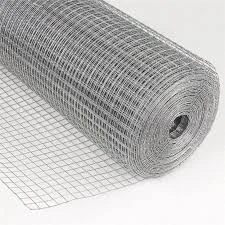nov . 21, 2024 17:58 Back to list
gabions
The Versatility and Benefits of Gabions in Modern Construction
Gabions, derived from the Italian word gabbione, meaning big cage, have been used in various forms for centuries. Traditionally made from wire mesh and filled with rocks, stones, or concrete, gabions have evolved into a versatile solution for landscape architecture, civil engineering, and environmental protection. Today, they are gaining popularity not just for their aesthetic appeal but also for their practical benefits in sustainable construction practices.
Structure and Design
Gabions typically consist of rectangular or cylindrical wire mesh units that are filled with natural materials. The most common materials used to fill gabions are granite, limestone, and river stones, although recycled materials are increasingly being utilized for their eco-friendly potential. This simple yet effective structure allows for a range of applications—whether as retaining walls, riverbank protection, or decorative garden features.
The design flexibility of gabions is one of their most appealing aspects. They can be stacked to create different heights and shapes, allowing architects and engineers to incorporate them seamlessly into various landscapes. With the growing awareness of environmental sustainability, the use of natural materials in gabions can complement ecosystems rather than disrupt them, making them an ideal choice for areas where visual appeal and structural integrity are essential.
Environmental Benefits
One significant advantage of gabions is their positive impact on the environment. Traditional construction methods often require the extraction of large amounts of natural resources, while gabions can utilize locally sourced materials. This not only reduces transportation emissions but also minimizes the disturbance to existing ecosystems.
Gabions also contribute to soil erosion control and stormwater management. By using them to stabilize riverbanks and slopes, the natural filtration properties of the stones help maintain water quality. The porous nature of gabions allows rainwater to permeate through, reducing runoff and helping to recharge groundwater supplies. These features make gabions a preferred choice in sustainable landscaping and necessary interventions in flood-prone areas.
Aesthetic Appeal
gabions

While functional benefits are a significant factor in choosing gabions, their aesthetic appeal cannot be overlooked
. Gabion walls or structures blend well with natural landscapes and can enhance the overall look of a site. They can be filled with different types of stone, allowing for creative designs that resonate with the surrounding environment.In urban settings, gabions have been successfully used in parks, public spaces, and residential gardens. They can serve as seating, planters, or art installations, bringing an element of nature into contemporary architecture. The versatility of gabions also allows landscape designers to incorporate plants and greenery, which can soften the look of hardscapes and contribute to biodiversity.
Durability and Maintenance
Another notable advantage of gabion structures is their durability. When properly constructed, gabions can withstand the test of time, resisting damage from environmental factors such as erosion, heavy rain, and freezing temperatures. The wire mesh is typically coated or treated to prevent rust, extending the lifespan of the structure.
Maintenance requirements for gabions are relatively low compared to traditional building methods. Minor repairs can be made easily, and in the event of wear, additional stones can be added to maintain appearance and functionality. This cost-effectiveness makes gabions an attractive option for long-term projects.
Conclusion
Gabions stand at the intersection of functionality, sustainability, and aesthetics in modern construction. As they continue to gain traction in various applications, from retaining walls to decorative elements, their unique benefits are becoming increasingly recognized. By providing an environmentally friendly solution to erosion control, stormwater management, and landscape enhancement, gabions represent a forward-thinking approach to construction that aligns with today’s values of sustainability and innovation.
As this trend continues, it is likely that we will see an even broader adoption of gabion technology, paving the way for a landscape that not only meets human needs but also respects and integrates with the natural world. As we strive towards building a sustainable future, the humble gabion serves as both a tool and an inspiration, reminding us of the balance between construction and conservation.
-
Weather Resistance Properties of Quality Roofing Nails
NewsAug.01,2025
-
How Galvanised Iron Mesh Resists Corrosion in Harsh Environments
NewsAug.01,2025
-
Creative Landscaping Uses for PVC Coated Wire Mesh Panels
NewsAug.01,2025
-
Common Wire Nail Dimensions and Their Specific Applications
NewsAug.01,2025
-
Choosing the Right Welded Wire Sheets for Agricultural Fencing
NewsAug.01,2025
-
Anti - Climbing Features of Razor Wire Barriers
NewsAug.01,2025









